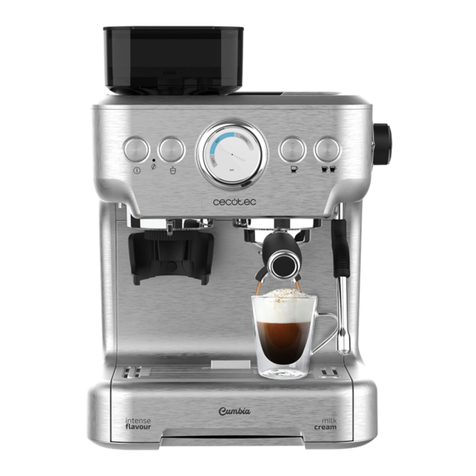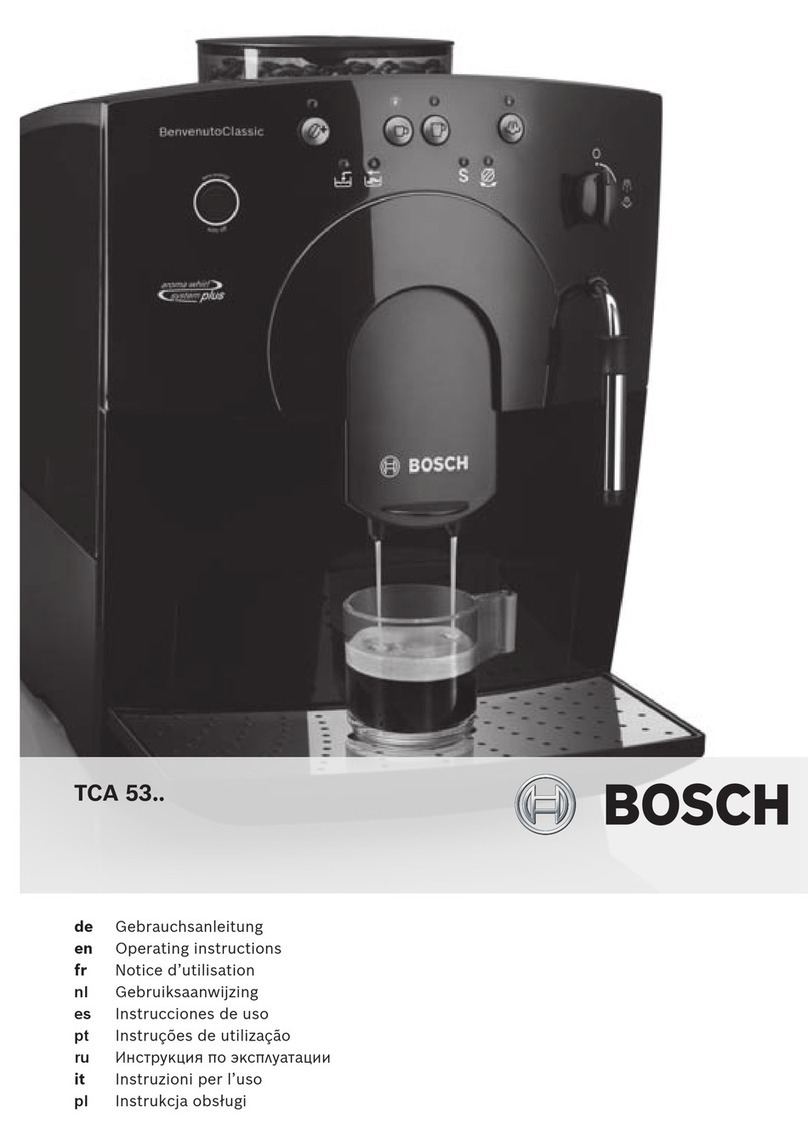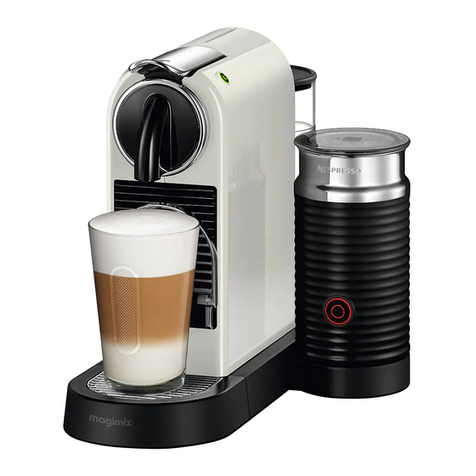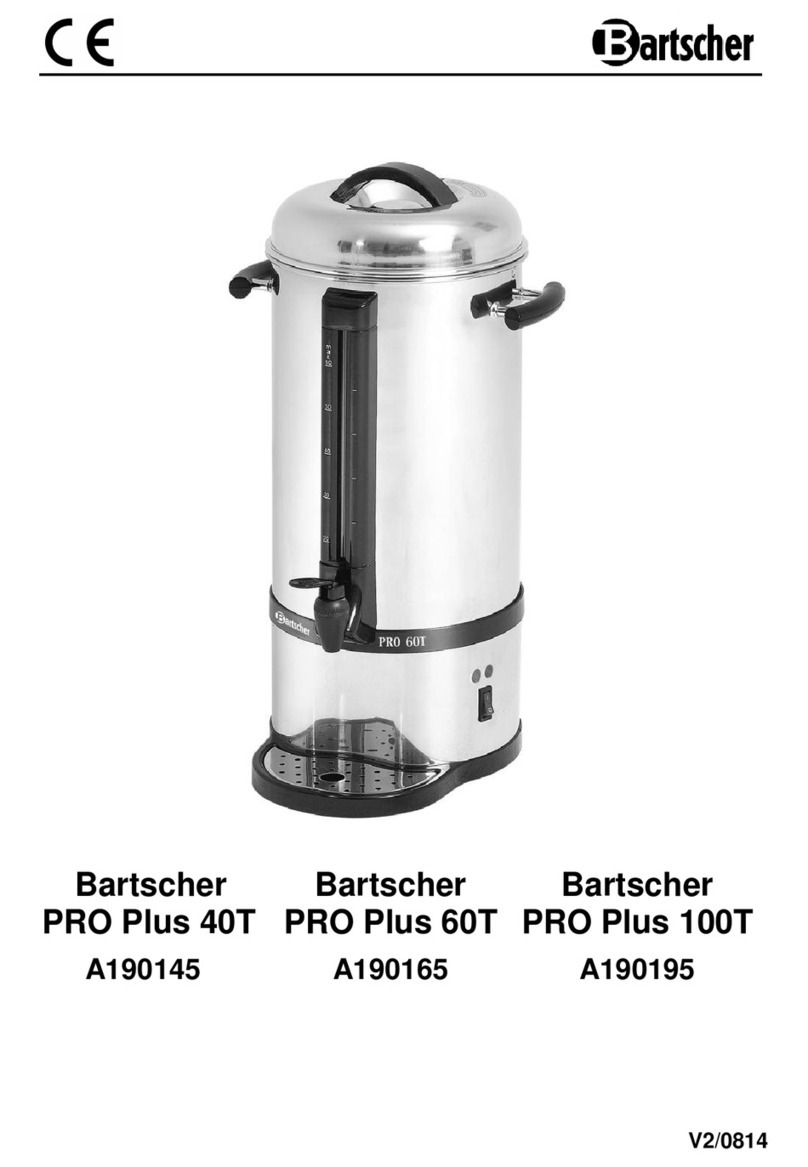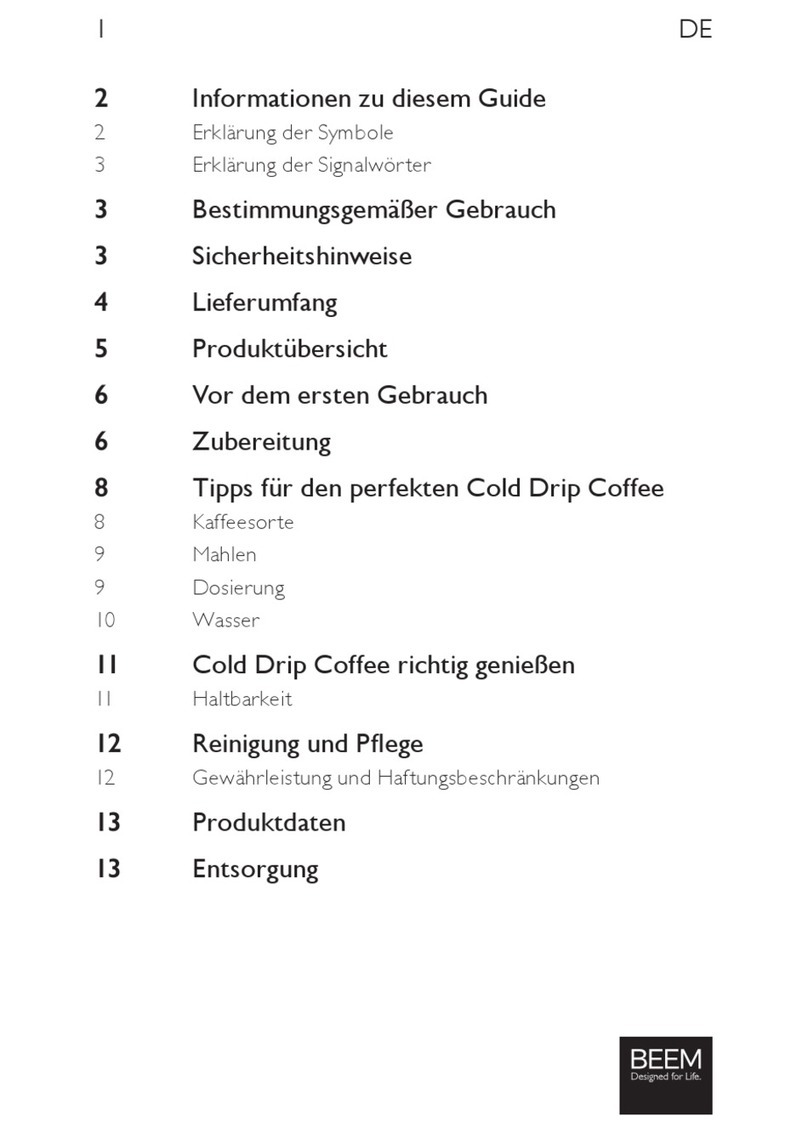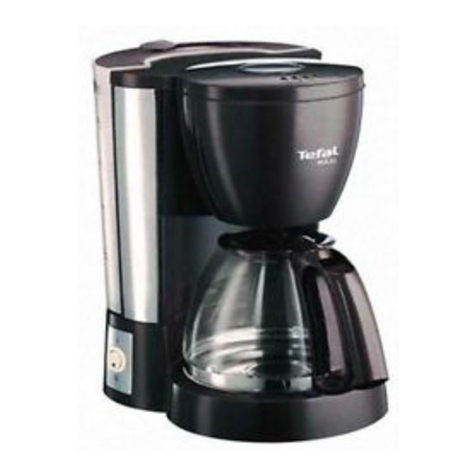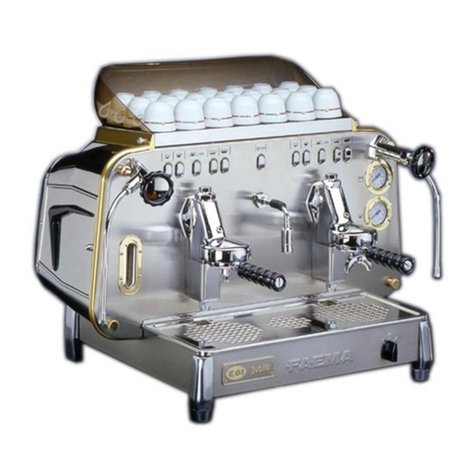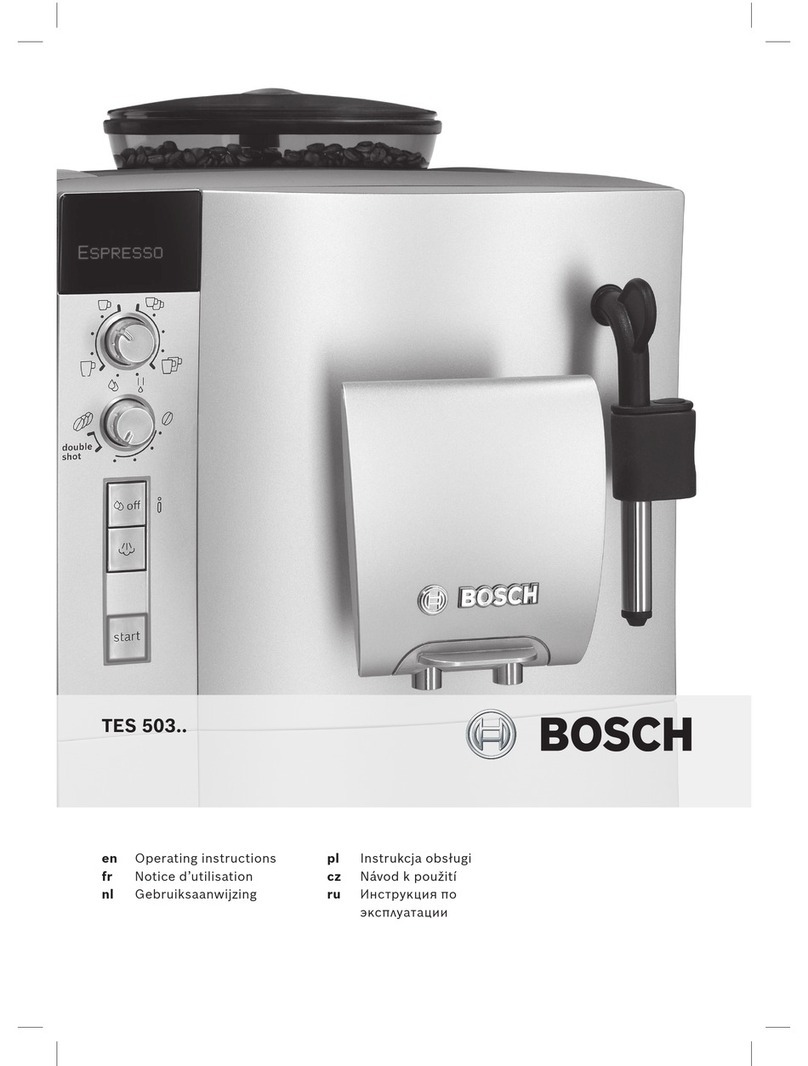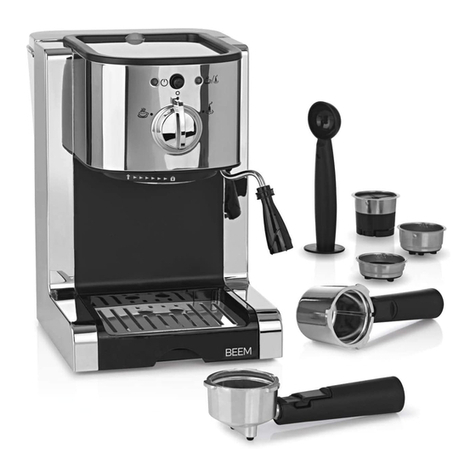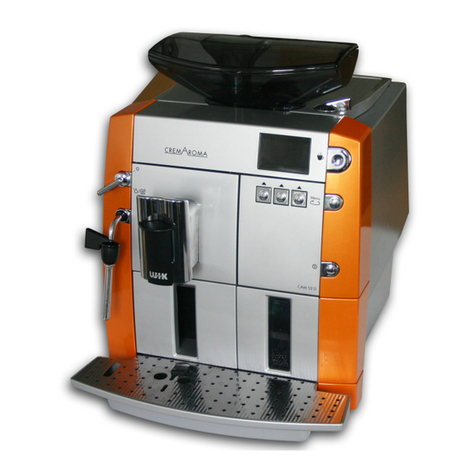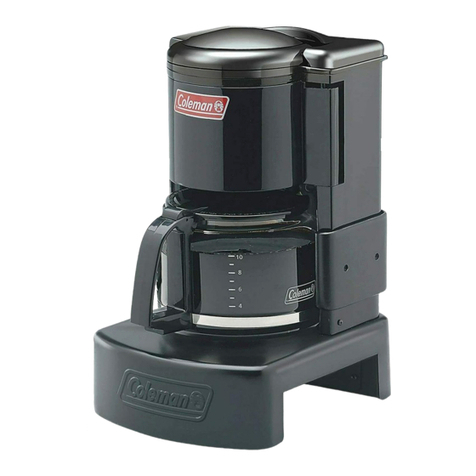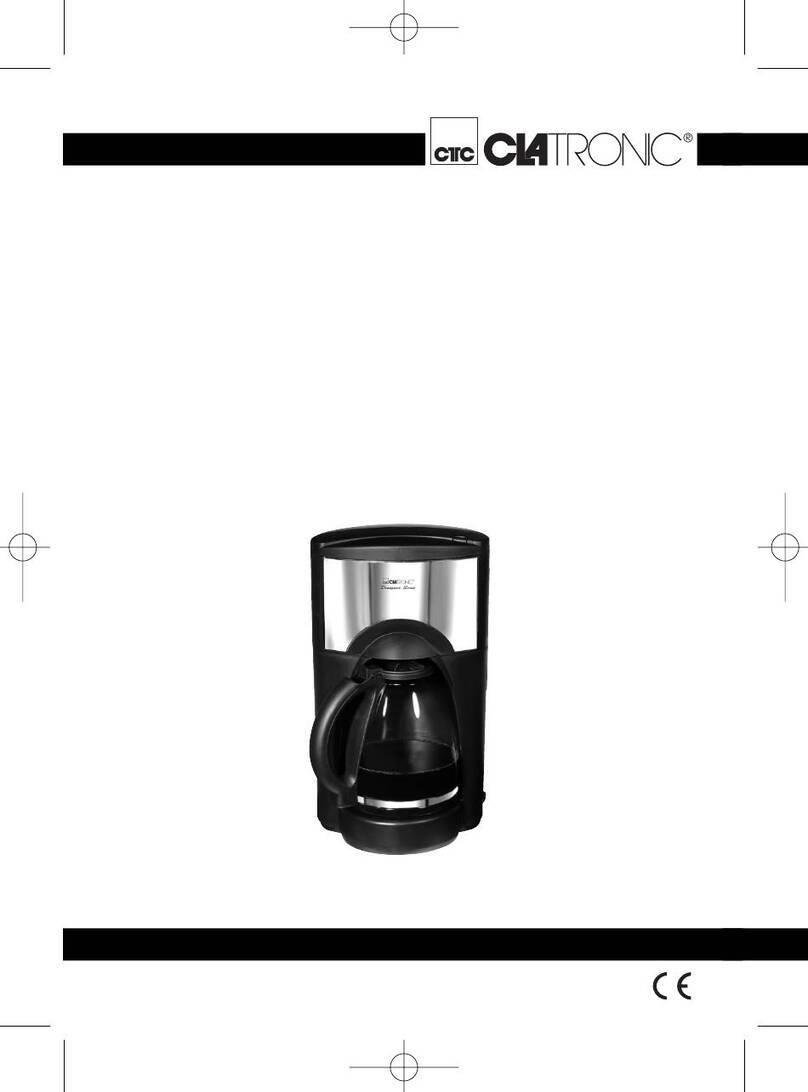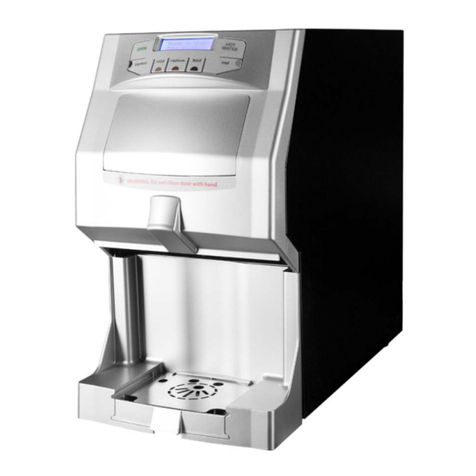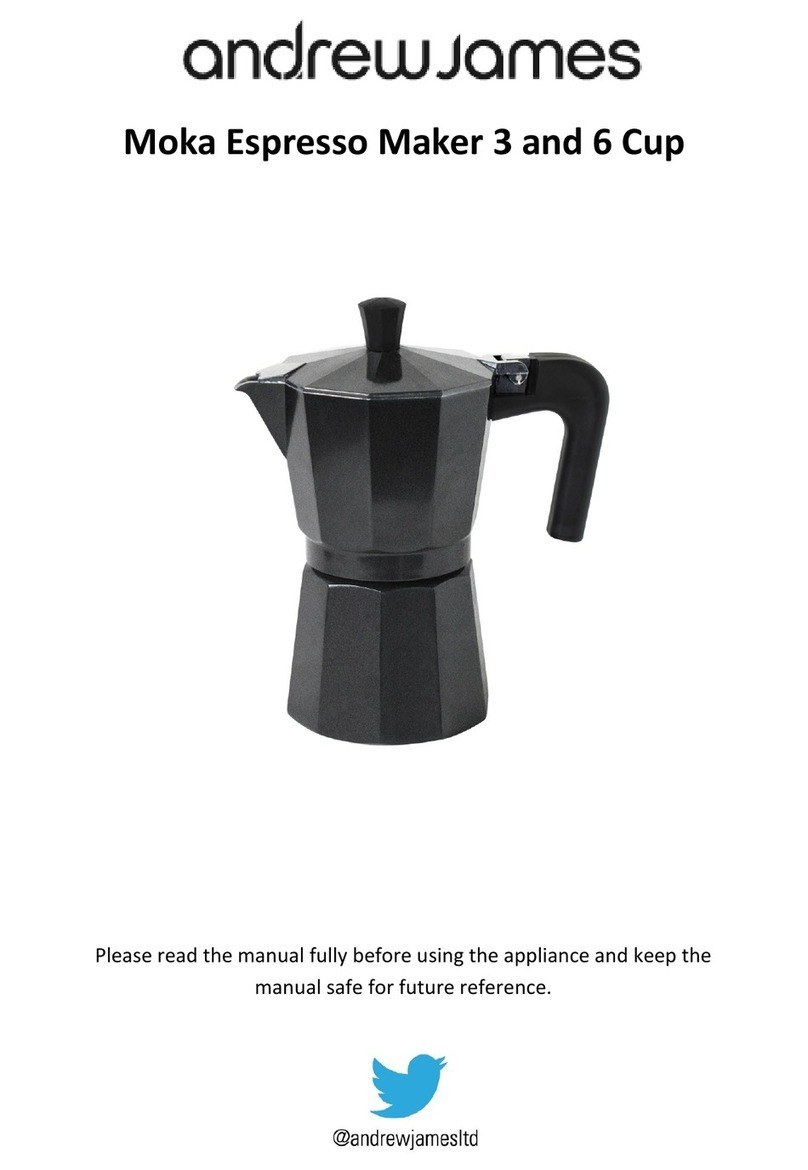BIANCHI VENDING BVM 901 LEISA User manual

BVM 901 LEIsa
CERT. N° 9191 BNVN
UNI EN ISO 14001:2004
CERT. N° 9105 BNVD
UNI EN ISO 9001: 2000
USE AND MAINTENANCE MANUAL


DECLARATION OF CONFORMITY
La BIANCHI VENDING GROUP S.p.A.
Corso Africa, 9 - 24040 Zingonia di VERDELLINO (BG) Italia
hereby declares under its own liability that the family of automatic vending machines - model:
“BVM 901 LEIsa”
is complying with the safety measures foreseen by the directives:
1. Low Voltage Directive EEC 73/23 ⇒ EEC 93/68 ⇒ EEC2006/95 - LV -
2. Electromagnetic compatibility EEC 89/336 ⇒ EEC 91/263 ⇒ EEC 92/31⇒
93/68 ⇒ EEC 2004/108
-EMC-
3. MATERIALS AND ARTICLES IN CONTACT WITH FOOD
(1) REG. (EC) 1935/2004 on materials and articles intended to come into contact with food
(2) REG. (EC) 1895/2005 on the restriction of use of certain epoxy derivatives in materials and
articles intended to come into contact with food
(3) DIR. 2002/72 EC relating to plastic materials and articles intended to come into contact
with foodstuffs
The tests have been made in accordance with the Harmonized European Standards
1) LOW VOLTAGE (Electrical safety LV):
EN 60335-1 : 2002 + A1+ A11 (Safety of Household and Similar Electrical Appliances)
EN 60335-2-75: 2004+ A1 (Safety for Vending and dispensing Machines)
EN ISO 11201 + EN ISO 3744 Measurement of acoustic noise
Sound Pressure Level: LpA < 70 dB(A)
2) ELECTROMAGNETIC COMPATIBILITY (EMC)
EN 55014-1:2000+A1+A2
EN 55014-2:1997+A1
EN 61000-3-2: 2000+A2
EN 61000-3-3:1995+A1+A2
EN 61000-4-4
EN 61000-4-5
EN 61000-4-6
EN 61000-4-11
EN 61000-4-2
EN50366:2003+A1 MeasurementofElectromagneticeld
3) MATERIALS AND ARTICLES IN CONTACT WITH FOOD
D.M. 21-03-1973 and its amendements ⇒ D.M. 2006 May 4th nr. 227, and receiptment of European
Directives:82/711/EEC, 85/572/EEC, 93/8/EEC, 97/48/EC, 2002/72/EC, 2004/13/EC, 2004/19/EC,
2005/79/EC, Reg. EC n. 1935/04 e Reg.EC n. 1895/2005.
Zingonia di Verdellino (BG), 01/01/2010
CHIEF EXECUTIVE OFFICER

L’Amministratore Delegato
______________________
INFORMAZIONE AGLI UTENTI
Ai sensi del Decreto Legislativo 25 settembre 2007, n. 185 e dell’ art. 13 del Decreto Legislativo 25 luglio 2005, n. 151” At-
tuazione delle Direttive 2002/95/CE, 2002/96/CE e 2003/108/CE, relative alla riduzione dell’uso di sostanze pericolose nelle
apparecchiature elettriche ed elettroniche, nonché allo smaltimento dei rifiuti”.
Il simbolo del cassonetto barrato riportato sull’apparecchiatura indica che il prodotto alla fine della propria vita utile deve
essere raccolto separatamente dagli altri rifiuti.
L’utente dovrà, pertanto, conferire l’apparecchiatura giunta a fine vita, agli idonei centri di raccolta differenziata dei rifiuti
elettronici ed elettrotecnici, oppure riconsegnarla al rivenditore al momento dell’acquisto di una nuova apparecchiatura di tipo
equivalente.
L’adeguata raccolta differenziata per l’avvio successivo dell’apparecchiatura dimessa al riciclaggio, al trattamento e allo smal-
timento ambientalmente compatibile, contribuisce ad evitare possibili effetti negativi sull’ambiente e sulla salute e favorisce il
riciclo dei materiali di cui è composta l’apparecchiatura.
Lo smaltimento abusivo del prodotto da parte dell’utente, comporta l’applicazione delle sanzioni amministrative di cui al D.Lgs.
n. 22/1997 (articolo 50 e seguenti del D.Lgs. n. 22/1997).
Dichiarazione di Conformità
Direttiva RoHS
Direttiva 2002/95/CE del Parlamento Europeo e
del Consiglio del 27 Gennaio 2003
sulla restrizione dell’uso di determinate sostanze pericolose
nelle apparecchiature elettriche ed elettroniche
Bianchi Vending Group S.p.A. dichiara che:
dal 1° luglio 2006 qualsiasi prodotto di Bianchi Vending Group S.p.A. immesso sul mercato in
Europa è conforme alla Direttiva RoHS, e quindi non contiene concentrazioni che superino i
limiti consentiti per le seguenti sostanze:
xPiombo (Pb)
xMercurio (Hg)
xCadmio (Cd)
xCromo esavalente (Cr(VI))
xBifenile polibromurati (PBB)
xEteri di difenili polibromurati:
o PentaBromoDifenilEtere (PBDE)
o OttaBromoDifenilEtere (OttaBDE)
o DecaBromoDifenilEtere (DecaBDE)
xPefluorooctano sulfonato (PFSO)
xPoliCloroNaftalene (PCN)
xBis(tribromophenoxy)etano PoliCloroBifenile (PCB)
xBenzene
Zingonia di Verdellino (BG), 12 Gennaio 2010

5
PE
IMPORTANT NOTICES
MAINTENANCE TECHNICIAN
The maintenance technician is dened as being the person responsible for lling up the containers with
soluble products, sugar, coffee, stirrers and cups.
The maintenance technician is also responsible for cleaning the distributor (see operations indicated in
chapter 7.0). In the event of a fault the maintenance technician must call the installation technician.
INSTALLATION TECHNICIAN
The installation technician is dened as the person responsible for the installation of the automatic distri-
butor, the starting up operations and the function settings.
Each regulation operation is the exclusive responsibility of the installation technician who also holds the
programming access password.
BEFORE USING THE MACHINE, READ THIS MANUAL CAREFULLY FOR ITS CORRECT USE IN ACCOR-
DANCE WITH THE CURRENT SAFETY STANDARDS.
ATTENTION: Important safety indications
READ the instruction manual machine carefully before using the machine
For any service or maintenance switch off the machine
ATTENTION: machine switched on
ATTENTION: hot parts in contact!
CAUTION! Parts in motion
Earthing indication

6
Tools necessary for undertaking interven-
tions on the automatic dispenser.
SOCKET SPANNERS
n° 5,5
n° 7
n° 8
n° 10
n° 20
n° 22
SPANNERS (fork type)
n° 7
n° 8
n° 10
n° 12
n° 14
SCREWDRIVERS
Small size
Medium size
Large size
Normal cross
Small cross
Medium cross
Large cross
Of Teon, small size for Trimmer regula-
tion.
RATCHET SPANNER no.14
TESTER
ELECTRICIAN’S SCISSORS
PROGRAMMING KIT
Keys at the disposal of the MAINTENAN-
CE and INSTALLATION technicians

7
1.0 PREMISE
1.1 Important notices
This automatic distributor has been designed and constructed in
full accordance with current safety regulations and is therefore safe
forthosewhofollowtheordinaryllingandcleaninginstructions
as indicated in this manual.
The user must not under any circumstances remove the
guards that require a tool for removal.
Some maintenance operations (to be done solely by specialized
technicians and indicated in this manual with a special symbol)
requirethat specic safetyprotections ofthemachine mustbe
switched off .
In accordance with the current safety regulations, certain opera-
tions are the exclusive responsibility of the installation technician,
and the ordinary maintenance technician may have access to
specicoperationsonwithspecicauthorization.
The acquaintance and absolute respect, from a technical point of
view, of the safety instructions and of the danger notices contained
in this manual, are fundamental for the execution, in conditions
of minimum risk, for the installation, use and maintenance of
this machine.
1.2 General Instructions
Knowledge of the information and instructions
contained in the present manual is essential for
a correct use of the automatic vending machine
on the part of the user .
– Interventions by the user on the automatic vending machine
are allowed only if they are of his competence and if he has
been duly trained.
The installation technician must be fully acquainted with all
the mechanisms necessary for the correct operation of the
machine.
– It is the buyer’s responsibility to ascertain that the users have
been trained and are informed and regulations indicated in the
technical documentation supplied.
Despite the full observance of the safety regulations by the
constructor, those who operate on the automatic dispensers
must be fully aware of the potential risks involved in operations
on the machine.
– This manual is an integral part of the equipment and as such
must always remain inside of the same, so as to allow further
consultations on the part of the various operators, until the
dismantlement and/or scrapping of the machine.
– In case of loss or damage of the present manual it is possible
receive a new copy making application to the manufacturer,
with prior indication of the data registered on machines’ serial
number.
– The functional reliability and optimization of machine’s ser-
vices are guaranteed only if original parts are used.
– Modications to the machine not previously agreed on with
the construction company and undertaken by the installation
technician and/or manager, are considered to be under his
entire responsibility.
INDEX
1.0 PREMISE
1.1 Important notices
1.2 General Instructions
2.0 TECHNICAL CHARACTERISTICS
3.0 DESCRIPTION OF THE MACHINE’S TECHNICAL
CHARACTERISTICS
3.1 Description of the machine
3.2 Scheduled Use
3.3 Models
3.4 Basic instructions for the machine operation
4.0 TRANSPORTING THE AUTOMATIC VENDING
MACHINE
4.1 Moving and Transport
4.2 Stocking
4.3 Packing
4.4 Reception
4.5 Unpacking
5.0 SAFETY RULES
6.0 INSTALLATION
6.1 Positioning
6.2 Self-feeding tank (standard supply)
6.3 Connection to the main water supply kit (optional)
6.4 Main Power supply connection
6.5 Machine starting up
6.5 Installation
6.6.1 Filling of water circuit
6.6.2 Cleaning of parts in contact with food
substances
6.7 Product loading
6.7.1 Product container loading
6.7.2 Payment system installation
7.0 SOFTWARE INSTRUCTIONS
8.0 MAINTENANCE
9.0 MAINTENANCE AND INACTIVITY
9.1 Cleaning and loading procedures
9.1.1 Procedure for distributor cleaning
9.1.2 Periodic cleaning by the maintenance
technician
9.1.3 Daily cleaning recommended
9.1.4 Weekly cleaning procedures
9.1.5 Product Loading instructions
9.2 Recommended maintenance
9.2.1 Ordinary and extraordinary maintenance
9.2.2 Coffee Group maintenance
9.3 Regulations
9.3.1 Dosage and grinding regulation
9.3.2 Instant electrovalve water ow regulation
9.4 When the unit is not working
10.0 DISMANTLEMENT
12.0 ALARMS AND WARNINGS

8
FIG.1.2
FIG.1.1
+39 035 4502111
All the operations necessary to maintain the machine’s ef-
ciency, before and during it’s use are at the users charge.
– Any manipulations or modications made to the machine that
are not previously authorized by the manufacturer, relieve
the latter from any responsibility for damages deriving from,
and will automatically result in the cancellation of the machine
guarantee terms.
– This manual reects the status at the moment of the emission
of the automatic vending machine on the market; possible
modications, upgrading, adaptments that are done the ma-
chine and that are subsequently commercialized do not oblige
Bianchi Vending Group S.p.A. neither to intervene on the
machine previously supplied, nor, neither to update the relative
technical documentation supplied together with the machine.
– It is however Bianchi Vending Group S.p.A. faculty, when
deemed opportune and for valid motives, to adjourn the ma-
nuals already present on the market, sending to their customers
adjournment sheets that must be kept in the original manual.
Possible technical problems that could occur are easily resol-
vable consulting this manual; For further information, contact
the distributor from whom the machine has been purchased, or
contact Bianchi Vending Group S.p.A. Technical Service at the
following numbers:
IWhen calling it is advisable to be able to give the following in-
formation:
The data registered on the serial number label (Fig.1.1)
The version of the programme contained in the microprocessor
(adhesive label applied to the component the assembled on the
Master board ) (Fig.1.2).
Bianchi Vending Group S.p.A. declines any responsibility for
damages caused to people or belongings in consequence to:
Incorrect installation
Inappropriate electrical and/or water connection.
Inadequate cleaning and maintenance
Not authorized modications
Improper use of the distributor
Not original spare parts
– Under no circumstances is Bianchi Vending Group S.p.A.
obliged to compensate for eventual damage resulting from the
forced suspension of drink deliveries as the result of faults.
– Installation and maintenance operations , must be done exclu-
sively by qualied technical personnel with prior training for
carrying out these duties.
– For relling use only food products that are specic for auto-
matic vending machines.
– The automatic distributor is not suitable for external installation.
The machine must be installed in dry places, with temperatures
that never go below 1°C it must not be installed in places where
cleaning is done with water hoses (ex. big kitchens.).
Do not use water jets to clean the machine.
– If at the moment of the installation, if conditions differing from
those indicated in the present manual, or should the same un-
dergo changes in time, the manufacturer must be immediately
contacted before use of the machine.
– Also check that any other eventual norms or regulations as laid
down by national or local legislation are taken into account and
applied.
This device is not intended for use by individuals (including chil-
dren) with reduced physical, sensorial or mental capacities, or by
individuals without the required knowledge and experience, unless
said individuals have been instructed on the use of the device and
are duly supervised by a person responsible for their safety.
Children must be monitored to ensure that they do not play with
the device, or use it as though it were a toy.
Access to the service area is allowed only by personnel
that have been specically trained accordingly and that
have acquired practical experience on the devices.

9
Fig. 2.1
CONTAINER CAPACITY
Coffee bean container kg 0,8
Single instant powder con-
tainer 1,75 lt.
Double instant powder con-
tainer 3,5 lt.
Height (A) mm 640
Width (B) mm 395
Depth (C) mm 580
Weight kg 31,5
Power Supply V 230 - V110
Power frequency Hz. 50 - Hz. 60
Installed power (1) From 1,5 kW to 2,5 kW
Nominal current 7,42 A
AVERAGE CONSUMPTIONS:
Water supply connection 3/4” gas
Electrical supply connec. Schuko plug
WATER SUPPLY
from main supply with pressure between 0.5 and 6.5 bar
BOILER RESISTANCES
of armoured type:
1500 W for the single espresso boiler version
2200 W for the double espresso boiler version
2000 W for the instant powder boiler version
2.0 TECHNICAL CHARACTERISTICS
(1) Check the rated output indicated on the data plate applied by
the distributor.

10
Fig. 3.1
3.0 GENERAL TECHNICAL DESCRIPTIONS
3.1 Machine description (Fig.3.1)
3.1.1 Espresso version
1 Coffee group and grinder
2 Container units for soluble drinks
3 Coffee bean container
4 Coin mechanism
5 Switching
6 Cup holder
7 Instant boiler
8 Dispensing chamber
9 Keyboard
10 Master board
11 Coffee grounds container
12 Self-feeding tank
13 Keyboard cards
14 Second espresso boiler
15 Display control board

11
Fig. 3.2
3.1.2 Instant version (Fig.3.2)
1 Container units for soluble drinks
2 Self-feeding tank
3 Switching
4 Keyboard cards
5 Instant boiler
6 Dispensing chamber
7 Keyboard
8 Master board
9 Cup holder
10 Coin mechanism
11 Display control board
3.2 Foreseen use
The distributor is exclusively for the dispensing of drinks, pre-
pared mixing food substances with water (by infusion as far as
concerns coffee).
For this purpose use products declared as suitable by the manu-
facturer for automatic distribution in open containers.
The plastic cups and the stirrers for sugar mixing will be placed at
the disposal of the user as they are not automatically dispensed
by the mod. BVM 901 LEIsa Distributor.
The drinks must be consumed immediately and in no case are to
be kept for subsequent consumption.

12
Fig. 3.3
Fig. 3.4
Fig. 3.5 Fig. 3.6
3.3 Basic operation concepts
During the normal functioning the distributor remains in standby
status.
Introducing the necessary amount, according to the set price,
and after pressing the key relative to the desired drink, the
drink dispensing cycle is activated and can be divided different
processes:
CUP AND SPOON COLLECTION
The mod. BVM 901 LEIsa automatic distributor does not feature
an automatic cup and spoon distributor.
The user shall therefore independently see to obtaining them via
the appropriate dispenser available in the vicinity of the vending
machine and shall ensure that they are correctly positioned in the
dispensingcompartment(g.3.3and3.4).
It is furthermore possible to request supply of a support element
enabling the positioning of a jug (both available on request)
insidethedispensingcompartment,asillustratedingures3.5
and 3.6.
SUGAR DISPENSER
The automatic vending machine version BVM 901 LEIsa in its
standard version, is not provided with a sugar dispensing option.
The user himself will therefore have to see directly to sugaring
the drinks personally.

13
Fig. 3.8
Fig. 3.7
Fig. 3.9 Fig. 3.10
INSTANT DRINKS
According to the type drink requested and to the distributor mo-
del, several of the various processes described here below can
be activated.
– Thesolenoidvalvexedtotheespressoboilerisengagedin
order to deliver the required quantity of water into the mixer
(g.3.7).
– The pump that dispenses the quantity of programmed water is
activated and is controlled by an appropriate electronic device.
(volumetric counter).
– The instant product geared motor activates the helicoidal screw
conveyor so as to dispense the quantity of product programmed
into the mixer (in some versions more than one product can
be conveyed into the same mixer) (Fig.3.8)
– once the preset quantity of water and powder is dispensed, the
whipper motor is switched off.
Fig. 3.9 - Pre-heating boiler
Fig. 3.10 - Instant powder boiler in polysulfone.

14
Fig. 3.11
Fig. 3.13
Fig. 3.12
Fig. 3.14
ESPRESSO COFFEE
This process only occurs for the versions provided with an express
coffee group.
– the grinder is activated until it reaches the dose of ground coffee
set by the doser (Fig.3.11)
– the doser electromagnet is activated , causing the opening of the
door and consequent fall of the coffee into the brew chamber
– the rotation group geared motor brings it into the dispensing
position and simultaneously compresses the ground coffee
(Fig.3.12).
– the pump that dispenses the quantity of programmed water and
thatiscontrolledbyaspecicelectronicdevice,(volumemeter),
withdrawing the water from the coffee boiler (Fig.3.13).
– the coffee group geared motor is activated again so as to bring
again into standby position; during this movement the used
coffee grounds are expelled (Fig.3.14).
The operational sequence (coffee grinding and release) may
occur in an inverse order according to the type of programming
involved.

15
Fig. 4.1
Fig. 4.2
kg .....
4.0 MOVING AN AUTOMATIC VENDING
MACHINE
4.1 Moving and transport (Fig.4.1)
The distributor must be shifted by 2 people (Fig.4.1).
Avoid :
– lifting the distributor with ropes or presses
– dragging the distributor
– upset or lay down the distributor during transport
– give jolts to the distributor
Prevent the distributor from:
– being knocked
– Stacking other objects on it
– Being exposed to the elements
– Positioned in damp places
The construction company is not liable for any damage which
may be caused for the partial or complete non-observance of the
warning notices indicated above.
4.2 stocking
For eventual stocking, avoid laying several machines over each
other, maintain it in vertical position, in dry places with tempera-
tures not inferior to 1°C (Fig.4.2).
4.3 Packing
The distributor is supplied in a cardboard box protected by poly-
styrene packaging (Fig.4.2).
The automatic distributor will be delivered packed, assuring both
a mechanical protection and protection against damages from
the external environment.
On the package labels are applied indicating:
maneouver with care
don’t turn upside-down
protect from the rain
don’t superimpose
protect from sources of heat
not resistant against bumps
type of distributor and serial number.
4.4 Reception
Upon reception of the automatic distributor you need to check that
the same has not suffered damages during the transport.
If damages of any nature are noticed place a claim with the
forwarder immediately.
At the end of the transport the packing must result
without damages which means it must not :
– present dents, signs of bumps, deformations or damages of the
external packaging
– present wet zones or signs that could lead to suppose that the
packing has been exposed to rain, cold or heat.
– present signs of tampering
4.5 Unpacking
Remove the distributor from its packaging, lifting the polysterene
panels and removing it from the box (Fig.4.2)

16
Fig. 4.3
– remove the key from the drink dispensing chamber (Fig.4.3)
– open the door of the distributor and remove the adhesive tape
from the components listed here below:
coin mechanism cover / keyboard cards
product containers
The packing material must not be left accessible to
others, as it is a potential environmental pollution
sources. For the disposal contact qualied companies
authorized.

17
Fig. 6.1
Fig. 6.2
5.0 SAFETY NORMS
ATTENTION!
– before using the automatic distributor, read this
manual carefully.
– The installation and maintenance operations must be performed
exclusivelybyqualiedtechnicalpersonnel.
– The user must not in any circumstance be able accede to those
parts of the automatic distributor that are protected and require
a tool in order to be accessible.
– The knowledge and the absolute respect, from a technical point
of view of the safety instructions and of the danger notices con-
tained in this manual, constitute the basis for the operation ,
in conditions of minimum risk, of the installation, starting and
maintenance of the machine.
Always disconnect the POWER CABLE before
maintenance or cleaning interventions.
ABSOLUTELY DO NOT INTERVENE ON THE MA-
CHINE AND DO NOT REMOVE ANY PROTECTION BEFORE
THE COOLING OF THE HOT PARTS!
– The functional reliability and optimization of
machine’s services are guaranteed only if original parts are
used.
– The distributor is not suitable for external installation. The
machine must be connect in dry places, with temperatures
that never go below 1°C it must not be installed in places
wherecleaning is done with water hoses (ex. big kitchens).
Do not use water jets to clean the machine.
– In order to guarantee normal operation, the machine must be
installed in areas that the environmental temperature is between
a minimum of -1°C and a maximum of +32°C end humidity of
not over 70%.
– In order to guarantee a regular operation, always maintain the
automatic distributor in perfect cleaning conditions
– Bianchi Vending Group S.p.A. declines all responsibility for
damages product to people or belongings in consequence to:
Incorrect installation
Inappropriate electrical and/or water connection.
Inadequate cleaning and maintenance
Notauthorizedmodications
Improper use of the distributor
Not original spare parts
– Futhermore verify observance of any other eventual local and
national standards.
6.0 INSTALLATION
6.1 Positioning
– Asalreadyspeciedinparagraph5.0,“Safetyregulations”,the
distributor is not suitable for external installation. The machine
must be connect in dry places, with temperatures that never go
below 1°C it must not be installed in places where cleaning is
done with water hoses(ex. big kitchens.) . It must be installed
inplaceswithoutdangerofexplosionsorres.
– If positioned near to a wall, there must be a minimum distance
from the wall of at least 5 cm. (Fig.6.1) so as to allow a regu-
lar ventilation. In no case cover the distributor with cloths or
similar.
WARNING! Do not position the device near inammable
objects, keep a minimum safety distance of 30 cm.
Bianchi Vending group S.p.A. declines all responsibility for in-
conveniences due to the non observance of the above mentioned
installation norms.
If the installation is made in safety evacuation corridors make
surethatwiththedistributordooropenthereisanyhowsufcient
space to pass by (Fig.6.1).
Soastoavoidthattheoorgetsdirty,duetoaccidentalspillingof
the products, use, if necessary, under the distributor, a protection
sufcientlywidetocoverthedistributors’operatingspace.
6.2 Self-feeding tank (standard supply)
The water tank that is provided to the rear of the dispenser must
belleddirectlybytheoperatorinchargeofmaintenance.
The tank’s maximum capacity amounts to 3.8 litres.
Fill up the self-feeding tank by lifting the tank cover positioned on
themachine’stoppanel,asillustratedingure6.2.

18
Fig. 6.3 Fig. 6.4
Fig. 6.6
Fig. 6.5
Fig. 6.7
6.3 Connection to the main water
supply kit (optional)
Before proceeding with the connection of the distributor to the
water main supply verify the following water characteristics:
– that it is drinkable (eventually through an laboratory’s analysis
certication)
– it has a pressure comprised between 0.5 and 6.5 bar ( if this
should not be the case, use a pump or a water pressure, reducer
according to the case).
– install, if not present, a tap in an accessible position to isolate
the machine from the water mains should it be found to be
necessary (Fig.6.3).
– beforemakingwaterconnections,makesomewaterowout
of the tap so as to eliminate possible traces of impurities and
dirt (Fig.6.4)
– connect the cock to the distributor, using a pipe in nylon material
suitable for food products and suitable for the mains pressure.
Intheeventoftheuseofaexiblepipeitisnecessarytot
the reinforcement bush supplied inside (Fig. 6.5).
– the foreseen connection is a 3/ 4 gas (Fig.6.6).
Figure 6.7 illustrates the mains water supply connection dia-
gram.
For the installation operations related to the mains water supply
connection kit, please refer to the relative instruction sheet supplied
together with the kit itself.

19
Fig. 6.10
Fig. 6.11
Fig. 6.8
Fig. 6.9
OK
6.4 Main Power supply connection
The distributor is suitable for operation at single-phase voltage
of 230 volt and is protected by 2 12.5 A fuses and by a 10A fuse
on the MASTER card.
We suggest to check that:
– the tension of net of 230 V doesn’t have a difference of more
than ± 10%
– The power supply output is able to bear the power load of the
machine.
– useasystemofdiversiedprotection
– position the machine in such a way as to ensure that the plug
remains accessible
The machine must be connected to earth in observance with the
current safety norms.
For this reason, verify the plant’s earth wire connection to ascertain
thatitisefcientanditanswersnationalandEuropeansafety
electricstandards.Ifnecessaryrequiretheinterventionqualied
personnelforthevericationoftheplant.
– The distributor is equipped with a power supply cable of H05VV-
F 3x1 mm², with SCHUKO plug (Fig.6.8).
– The sockets that are not compatible with that of the machine
must be replaced. (Fig.6.9).
– The use of extension, adapters and/ or multiple plugs is forbid-
den.
Bianchi Vending Group S.p.A. declines all responsibility for
damages deriving for the complete or partial failure to observe
these warnings.
The power supply cables are to be replaced by
skilled personnel.
6.5 Starting up of the unit
The distributor is provided with a connection cable for connection
tothemainswatersupply(g.6.10)andaswitchwhichcutsoff
thepowerfromalluserseachtimethatitisoperated(g.6.11).
Should it be necessary to operate inside the distributor for any
ordinary or special maintenance operates, it is necessary to isolate
theuserappliances by activatingthe switch (g.6.11), bearing
in mind that with the electrical connection engaged, the power
terminals are live.
Each time the distributor is switched on a diagnosis cycle is per-
formed in order to verify the position of the mobile parts and the
presence of water and of some products.

20
Fig. 6.12
Fig. 6.13
6.6 Installation
6.6.1 Filling the water circuit
The appliance undertakes automatic lling of the water supply
circuit.
The sequence:
Machine starting up.
First self installation mode.
Attherstmachinestartupwillbeperformedaselfinstalltion.
Atrstmachinestart-up,thesystemwillperformanauto-instal-
lationrunthatwillalsoll-uptheespressoboilerwith300cc.
- Attheendofsaidauto-installationandll-up,thesystemwill
request entry of the date.
– attheendofthewaterlling(Fig.6.13), effect a cleaning cycle
ofthemixergroupsoastollallthecircuitsandremoveeven-
tual residues from the boiler.
First self installation mode
For Espresso single boiler:
Whenthedistributorisstarteduptheairbreakislledwithwa-
ter.
Whentheoaterisintheupperpositionthemachinewillstart
loading water automatically and this will go on until 300cc of water
are counted by the fan (coffee will therefore be dispensed via the
coffee electro valve).
The procedure will be carried out with resistance off.
At the end a date will be shown on the display.
For Instant boiler :
Upon switching on of the dispenser, the polysulfone boiler starts
llingupuntilitreachestheprobe’smaximumlevel.
The pump starts up for 5 sec, the system requests entry of the
date, then the heat-up process begins.
Before connecting up the machine’s power supply, check
to ensure that you have connected the dispenser up to
the water supply mains and that you have opened the
water supply tap.
Perform the rst installation procedure for VMs with self-
feeding tank, by removing the lter, if present, from the
tank itself.
Table of contents
Other BIANCHI VENDING Coffee Maker manuals
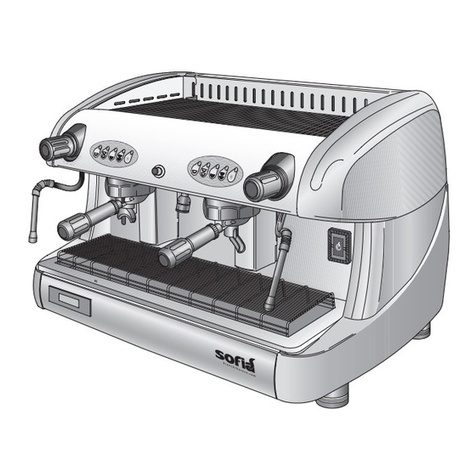
BIANCHI VENDING
BIANCHI VENDING SOFIA ESPRESSO User manual
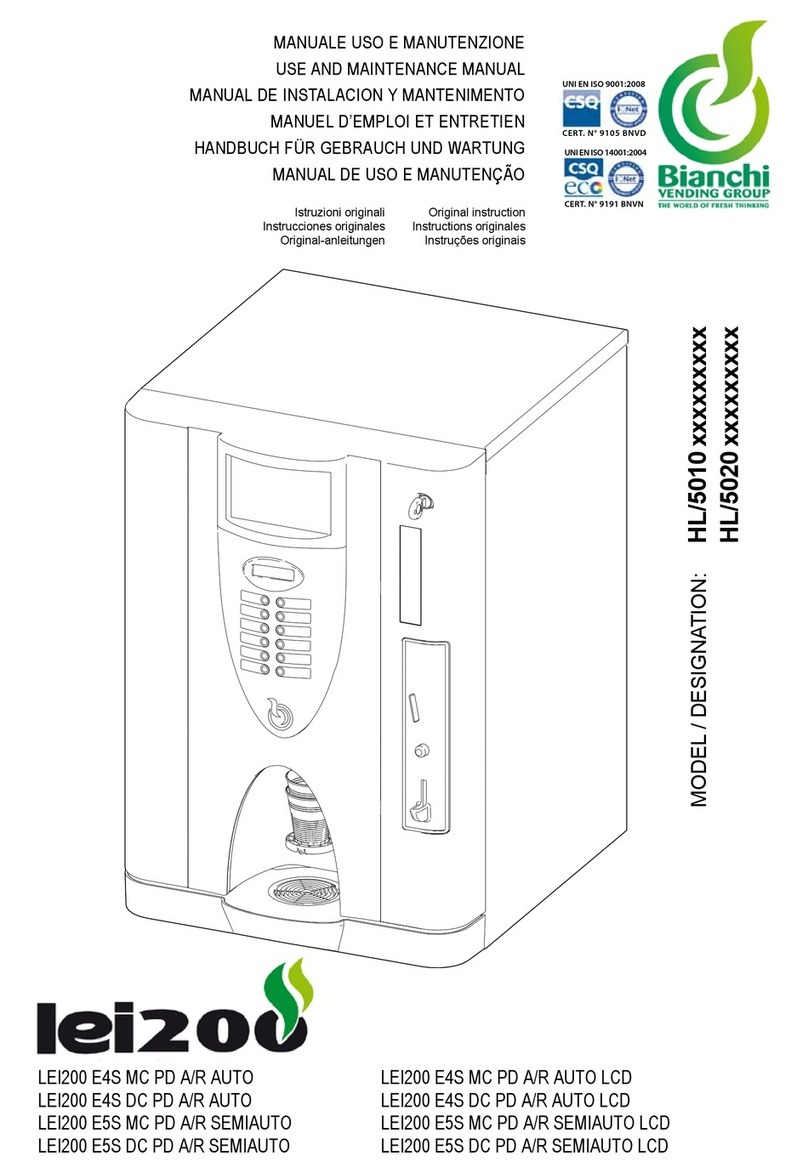
BIANCHI VENDING
BIANCHI VENDING LEI200 E4S MC PD A/R AUTO User manual
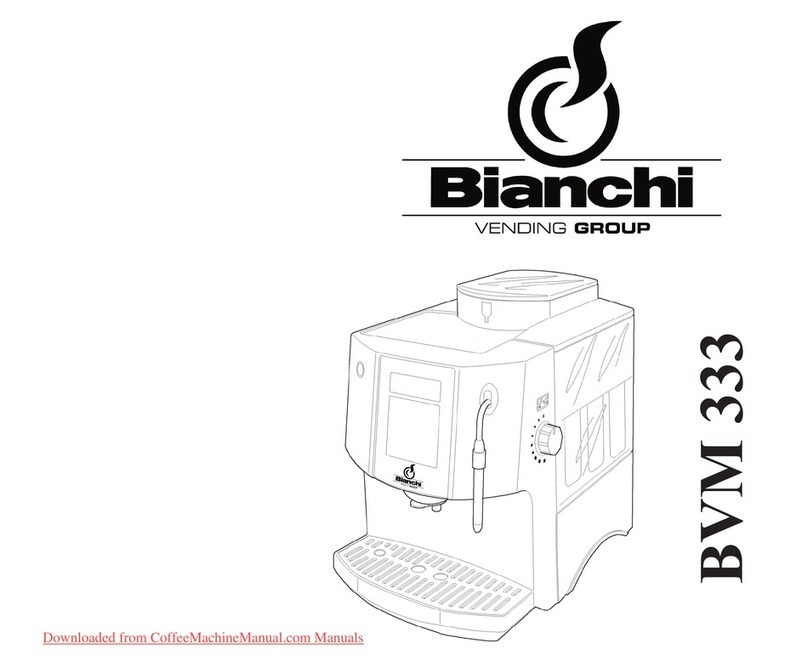
BIANCHI VENDING
BIANCHI VENDING BVM 333 User manual
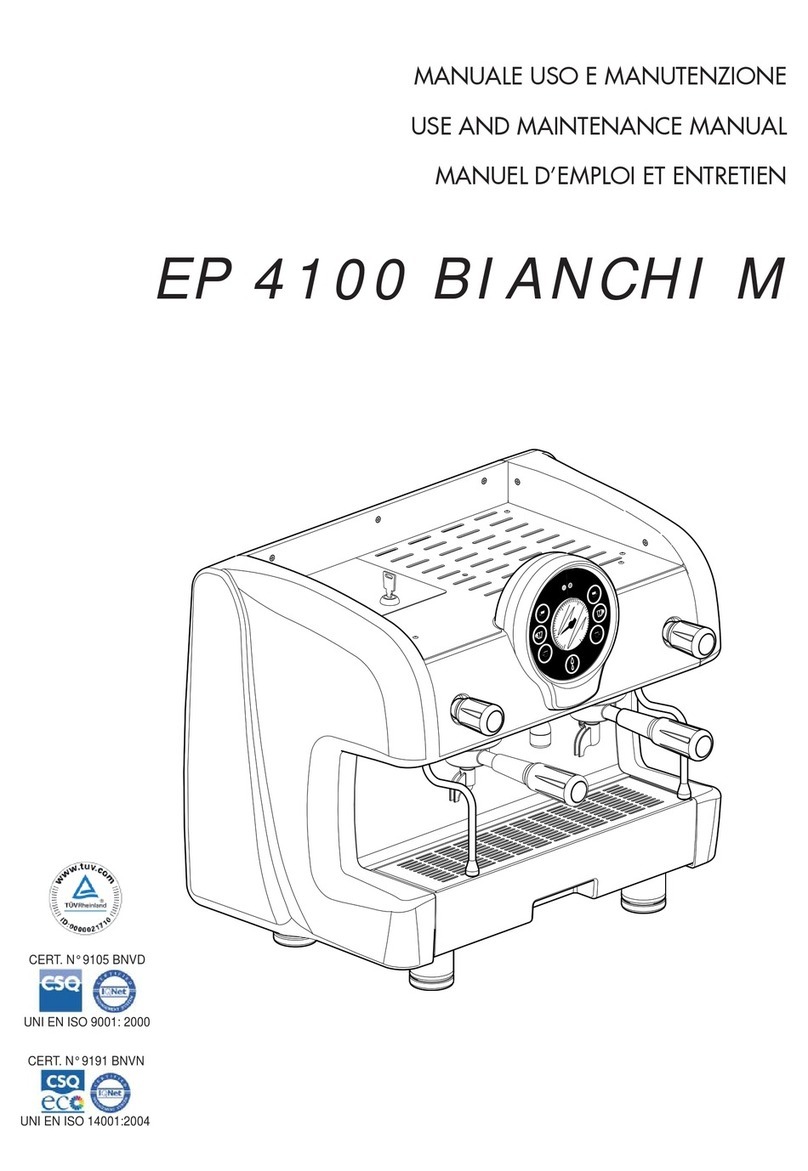
BIANCHI VENDING
BIANCHI VENDING EP 4100 BIANCHI M User manual
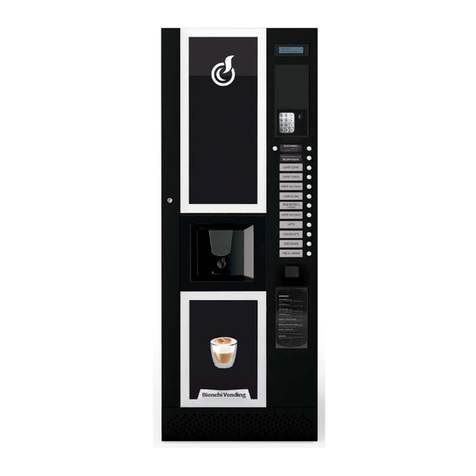
BIANCHI VENDING
BIANCHI VENDING LEI700 User manual
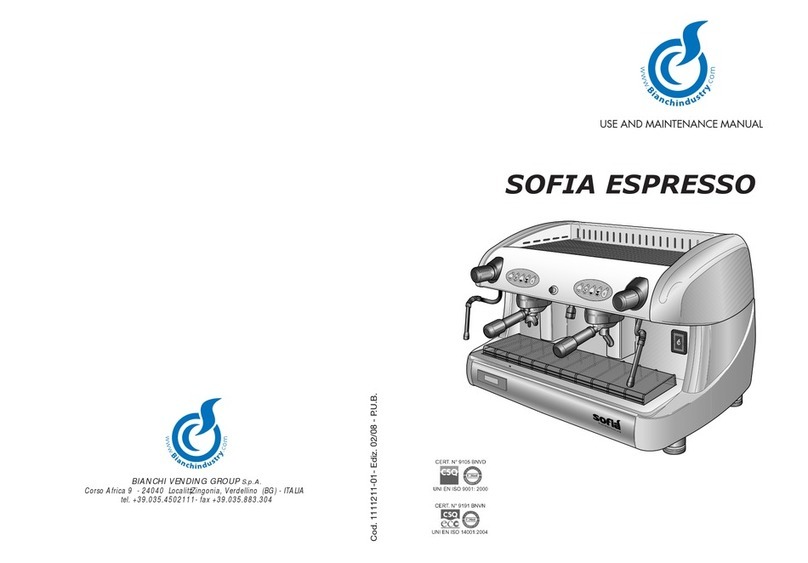
BIANCHI VENDING
BIANCHI VENDING SOFIA ESPRESSO User manual
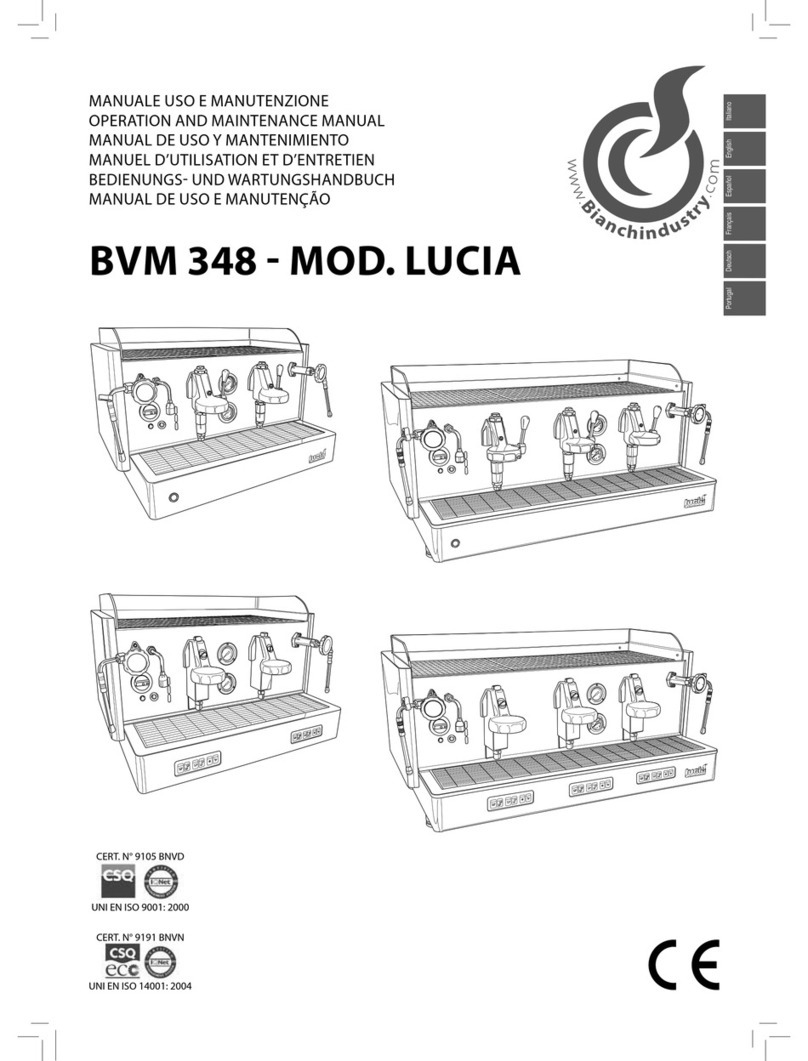
BIANCHI VENDING
BIANCHI VENDING Lucia 2 Groups User manual
